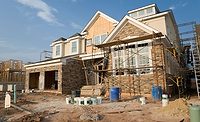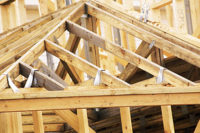Housing Recovery Slow and Steady in 2015

Solid employment gains, attractive mortgage rates, a growing economy and pent-up demand will help keep the housing market moving forward throughout 2015 and into next year, according to economists who participated in the recent National Association of Home Builders (NAHB) 2015 Spring Construction Forecast Webinar.
“This should be a good year for housing, buoyed by sustained job growth, rising consumer confidence that is back to pre-recession levels and a gradual uptick in household formations,” said David Crowe, NAHB chief economist. “We expect 2016 to be even better, due to a significant amount of pent-up demand and an economy that will be entering a period of reasonable strength and consistency.”
Over the past seven years, Crowe estimates that the slow recovery and uncertainty in the job and housing markets resulted in 7.4 million lost home sales. “While some of these sales will never take place, this does indicate how many sales were lost as fewer households decided to move,” he said. “We expect at least some of these to return in the form of new home sales as job and economic growth continue to firm.”
A key demographic to help jump-start this process should come from the millennials. The share of first-time home buyers has traditionally averaged around 40%, but in the aftermath of the housing downturn it now stands at just under 30%. First-time buyers are expected to provide a boost to the housing market, as the unemployment differential between young people and others is shrinking, Crowe noted.
Turning to the forecast, the NAHB Remodeling Market Index, which averages ratings of current remodeling activity with indicators of future activity, stands at 57 in the first quarter of 2015 and has been at or above 50 most of the past two years. A reading above 50 indicates that more remodelers report that market activity is higher (compared to the previous quarter) than report it is lower. NAHB is projecting that residential remodeling activity will increase 2.3% in 2015 over last year and rise an additional 2.4% in 2016.
Single-family housing production is expected to post a 9% gain in 2015 to 704,000 units and jump an additional 39% to 977,000 units in 2016. On the multi-family side, production ran at 355,000 units last year, what could be considered a normal level of production, and is expected to continue in that range or modestly higher through 2015 and 2016.
Focusing on new home sales, Sam Khater, deputy chief economist at CoreLogic, said that sales volume is weak, but pockets of strength exist. “New home price growth is fastest in the coastal states and eight of the top 10 healthiest new sale markets are in the Carolinas and Texas,” he said.
Of the top 100 new-home sale markets, Houston leads the pack at 2,000 sales per month, followed by Dallas and Atlanta, which are running at about half that pace. In terms of volume, the bulk of the concentration is in southern markets.
“Nashville and San Jose stand out as the fastest-growing markets, and Atlanta and San Antonio are the best large markets,” said Khater.
Only three new-sale markets are larger today than in 2000: Nashville, Oklahoma City and San Antonio.
For more information, visit www.nahb.org.
Looking for a reprint of this article?
From high-res PDFs to custom plaques, order your copy today!









